People
Aaron Curry on Intergalactic Orgies and His First Painting Show in New York
The LA artist gets his first painting show in New York.
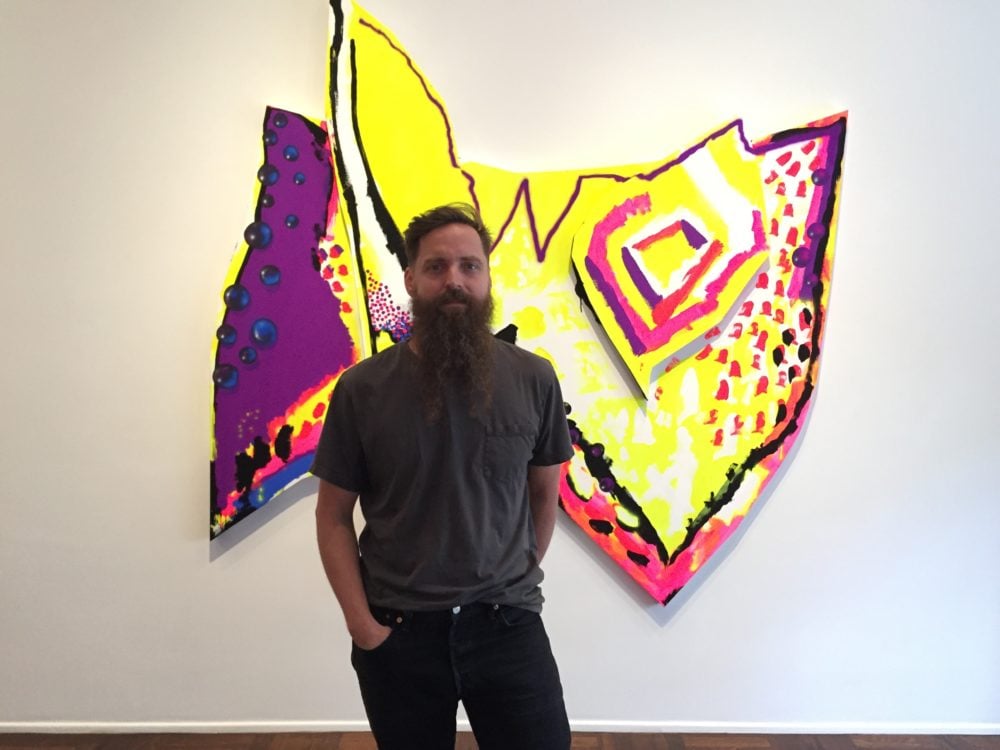
The LA artist gets his first painting show in New York.

Henri Neuendorf

Beards seem to be in fashion at Michael Werner’s uptown gallery in New York, where last week both artist Aaron Curry and gallery archivist Jeff Alford were sporting facial hair that would not have looked out of place at the downtown biker bar Hogs and Heifers. It is only Curry’s thoughtful and soft-spoken demeanor and Alford’s impeccable custom suit that belies their tough guy outward appearances.
The exhibition, titled, “Headspace,” is the artist’s first show devoted to paintings in New York, having debuted his return to painting in Los Angeles at David Kordansky Gallery last year. Despite training as a painter, the Texan artist rose to prominence for his sculptural works, which reinterpret Picasso and Calder-esque dimensions through innovative materials and vibrant colors. At Michael Werner, Curry demonstrates the breadth of his palette, tying in acrylic, gouache, and airbrush, while also incorporating his sculptural disposition in his shaped and layered canvases. His familiar visual language and themes shine through in these new works, albeit in a variety of different painterly mediums.
From September 9-October 29 at Michael Werner, Curry is showing a new series of paintings influenced by 20th century modernism and Curry’s personal preoccupation with sci-fi, cosmology, and skateboard culture; the works blend a series of influences into vibrant and colorful semi-abstract pictures.

Aaron Curry Cosmic Bricoleur (2016). Courtesy Michael Werner Gallery, New York.
Speaking in a surprisingly soft tones, the artist sat down with artnet News in the gallery’s office to talk about his work, his influences, and the cosmos.
How were you first exposed to art?
My grandmother had bought a Salvador Dalí book and a Picasso book and I remember being really drawn to them. As a kid I was always taken more by art that wasn’t mainstream. Maybe illustrative art, art from album covers, or skateboard graphics. But “real art” was through books.
When I moved to Chicago to study, I had no knowledge of art at all, so I went headfirst into learning art history. It wasn’t until I got there that I had really been around art in serious, and started to discover things, it took me until I was probably around 18.
You blend personal influences such as skateboard and BMX culture, with sci-fi and art historical references. Can you discuss how you bring those different aspects together.
A lot of the illustrative art or popular culture was already taking modernism and filtering it. So a lot of cartoon artists were looking at Picasso and all those weird faces he was making and they were turning it into something else, like Basil Wolverton, who I was a big fan of.
I try to keep the door open to anything that can come in as far as inspiration.
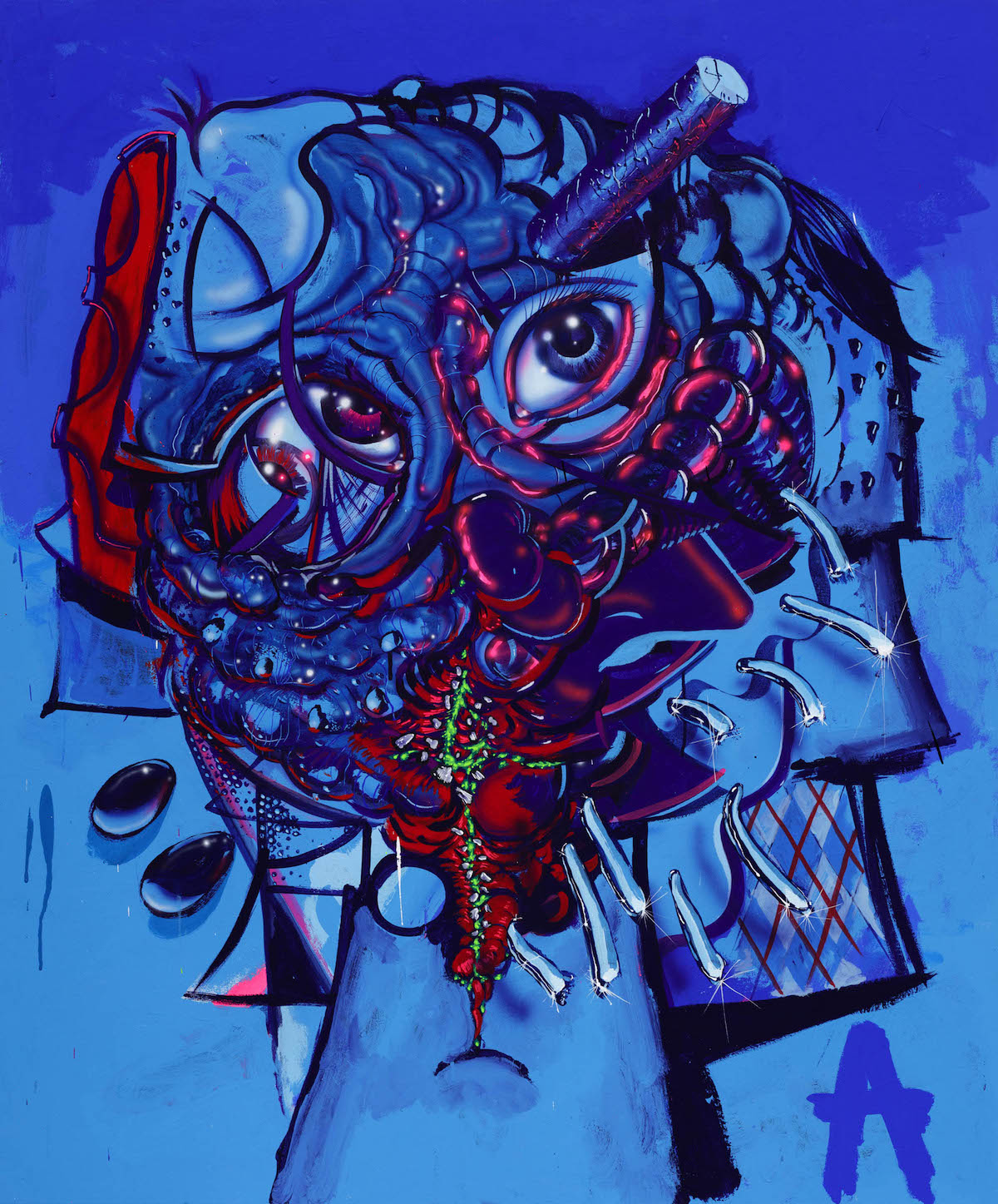
Aaron Curry My Brain is an Antenna (2016). Courtesy Michael Werner Gallery, New York.
You started out as a painter, but then became known for sculpture. What made you revisit the medium of painting?
It never really went away. A lot of the time I would do these sculptures, they would be works that were shown around the same time that would either be a wall piece or some of these leaning pieces that I used to do. They were sculptural because they touched the floor, but essentially it was almost like a painting that just wasn’t hung up on the wall.
I started getting really attracted to really bad CGI movies because it was a similar kind of idea. When George Lucas made those new Star Wars films that were really terrible but it was interesting to see a live acting-ness to the weird reality that he created because everything was CGI. And we knew it was fake but it was so labored that you kind of had to believe it as a new reality. In a way I related it to this place that is in between dimensions.
In your paintings you’ve retained a lot of the familiar shapes from your sculptures. Is that a conscious decision?
For me it was really about creating a visual language.
I’ve brought in all of these references and they’re things that I’m naturally drawn to, that I like. I’ve made up my dialogue that I like to talk about to put out there visually.
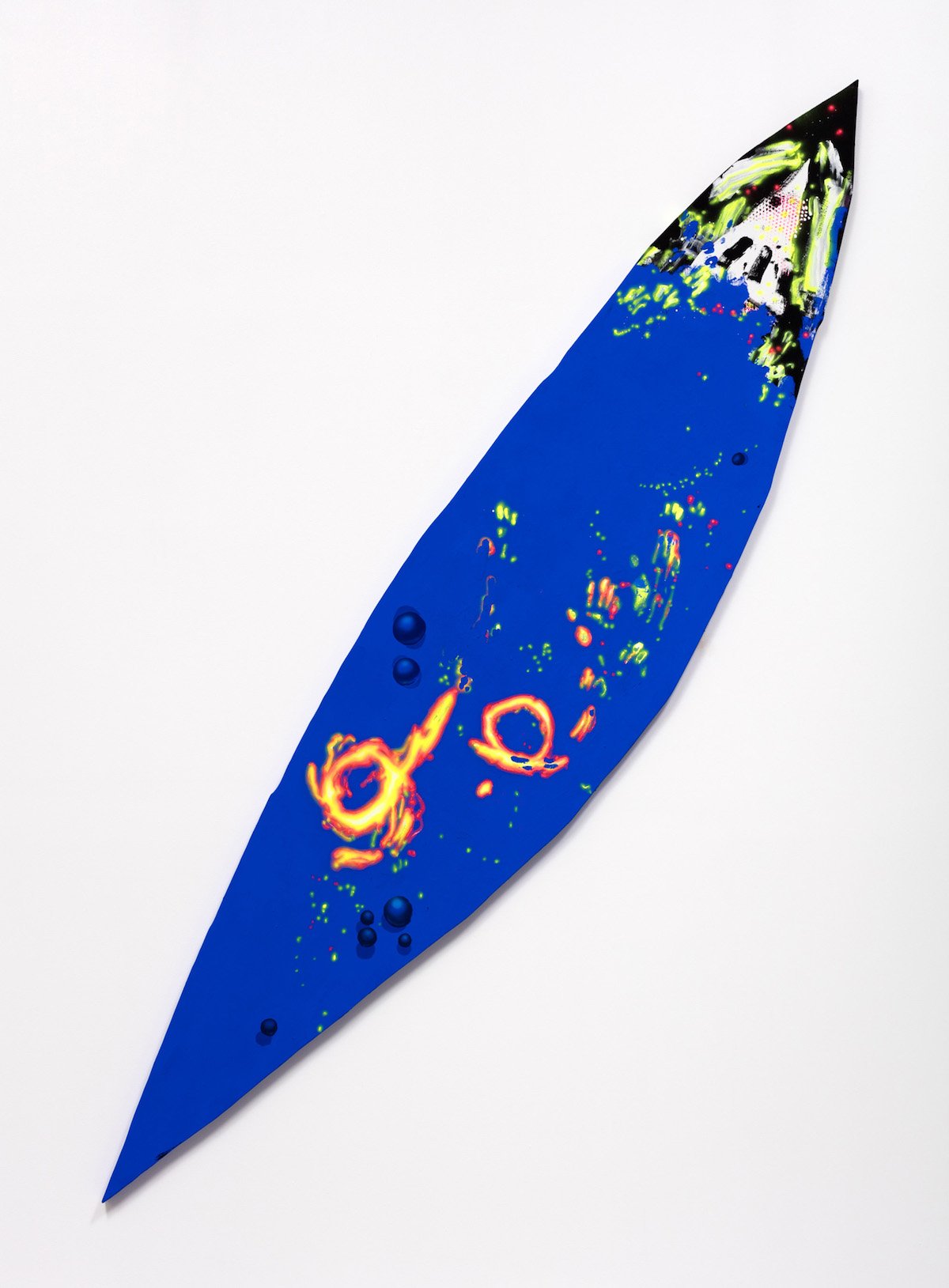
Aaron Curry Cover Up (2016). Courtesy Michael Werner Gallery, New York.
How has your process changed as you’ve transitioned from sculpture to painting?
It’s different because with sculpture if you get stuck with it or you decide that its not working out you have to destroy it a lot of the time. With painting you can just paint over it or over part of it; it’s a different way of working.
It’s interesting to note that your paintings retain a sculptural element with the shaped and layered canvases. Is it difficult to leave sculpture behind?
It’s probably the sculptor in me that wanted to go back to cutting out space somehow. But it also created a huge problem because sometimes the shape was really good and maybe it shouldn’t be painted on. Sometimes I’d start working on ‘em and I realized that it’s almost working against the shape, which was a bit of a struggle at times.
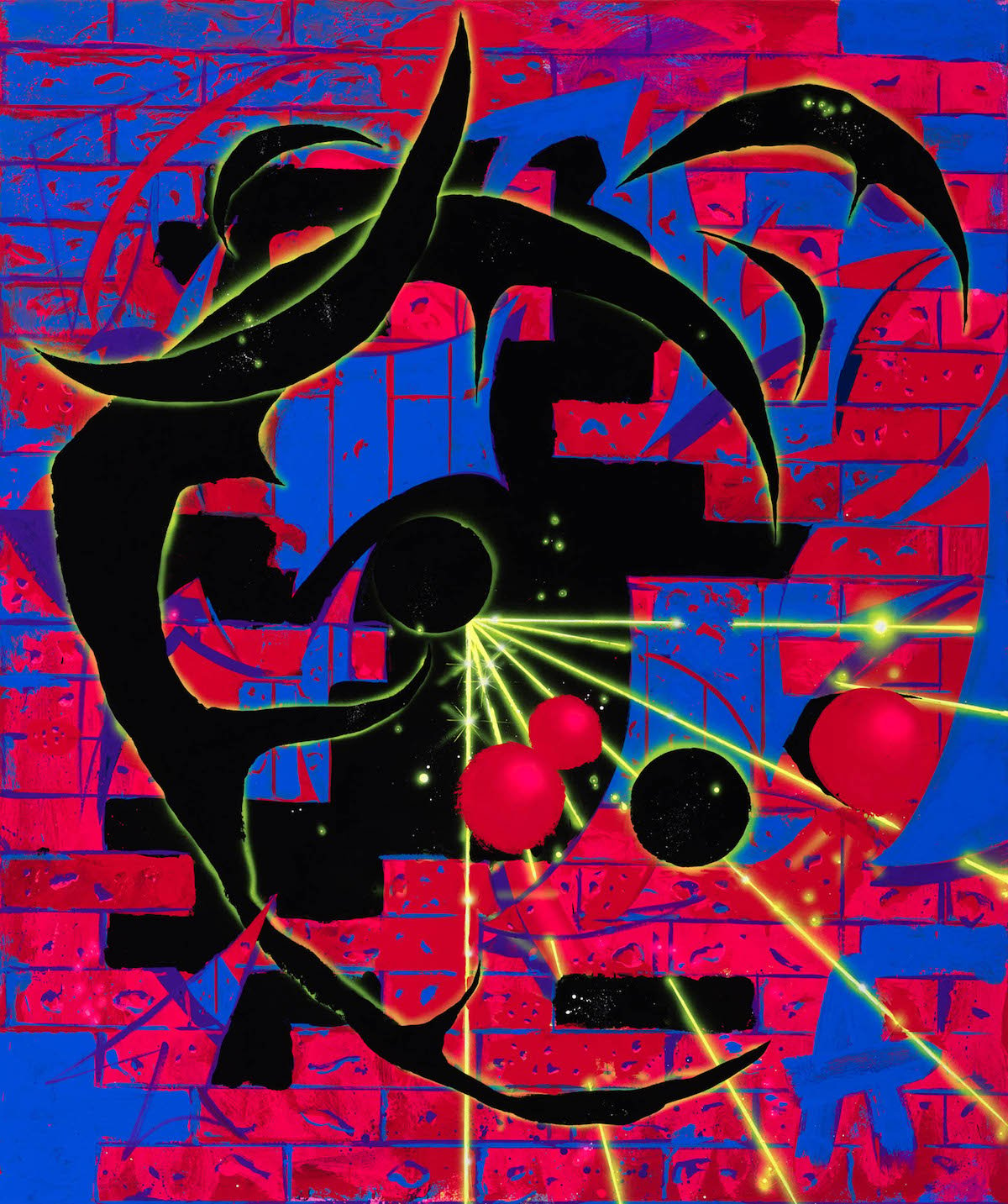
Aaron Curry My Head Feels Weird (2016). Courtesy Michael Werner Gallery, New York.
What do you mean by “working against the shape?”
Sometimes I felt like if I was putting too much on creating an illusion on top of the shape. If the shape is powerful enough on its own it doesn’t need to have that. It’s almost like I’m looking in it and not paying attention to what’s happening around it, or they were working against one another.
The theme of cosmology and the skies is a recurring theme in the exhibition, can you speak about that?
In Los Angeles we’ve been in this drought for going on five years now. I don’t flush my toilet until I’ve gone number two, and I take really quick showers, so were dealing with this whole idea [of environmentalism].
The earth is like this beautiful heaven for all of us to live on. And until we start to contemplate the cosmos, we’re taking for granted. I started looking at all these images from the Hubble Telescope which have been coming out now. They redid the lens on it and they have these fantastic images of space.
I did a show last year at Dave Kordansky’s and I was thinking a lot about the creation of matter. So I did all of these space orgies that I was thinking about, like stars and matter having sex and things being born, these interstellar nurseries, that’s how I got to that.
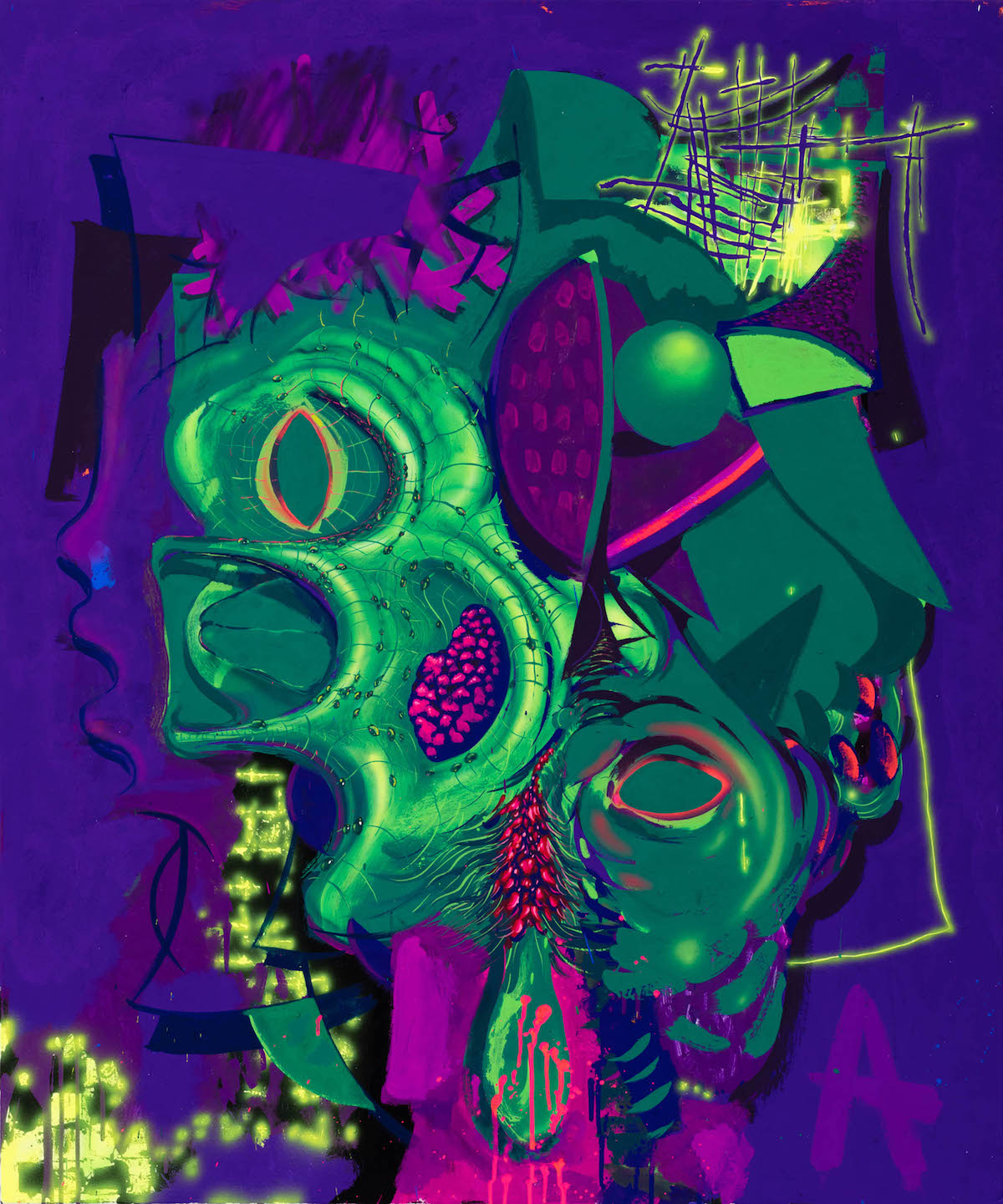
Aaron Curry Compositional Abstraction with a Weird Headdress (2016). Courtesy Michael Werner Gallery, New York.
How has LA influenced you?
I studied with Mike Kelley, Jim Shaw, Richard Hawkins, Liz Lerner—a lot of great professors. I hadn’t become a mature artist until I got to LA, and when I got there, it kind of embraced me as an artist, and who I was, and I really feel like it’s my home now.
This interview has been edited and condensed.